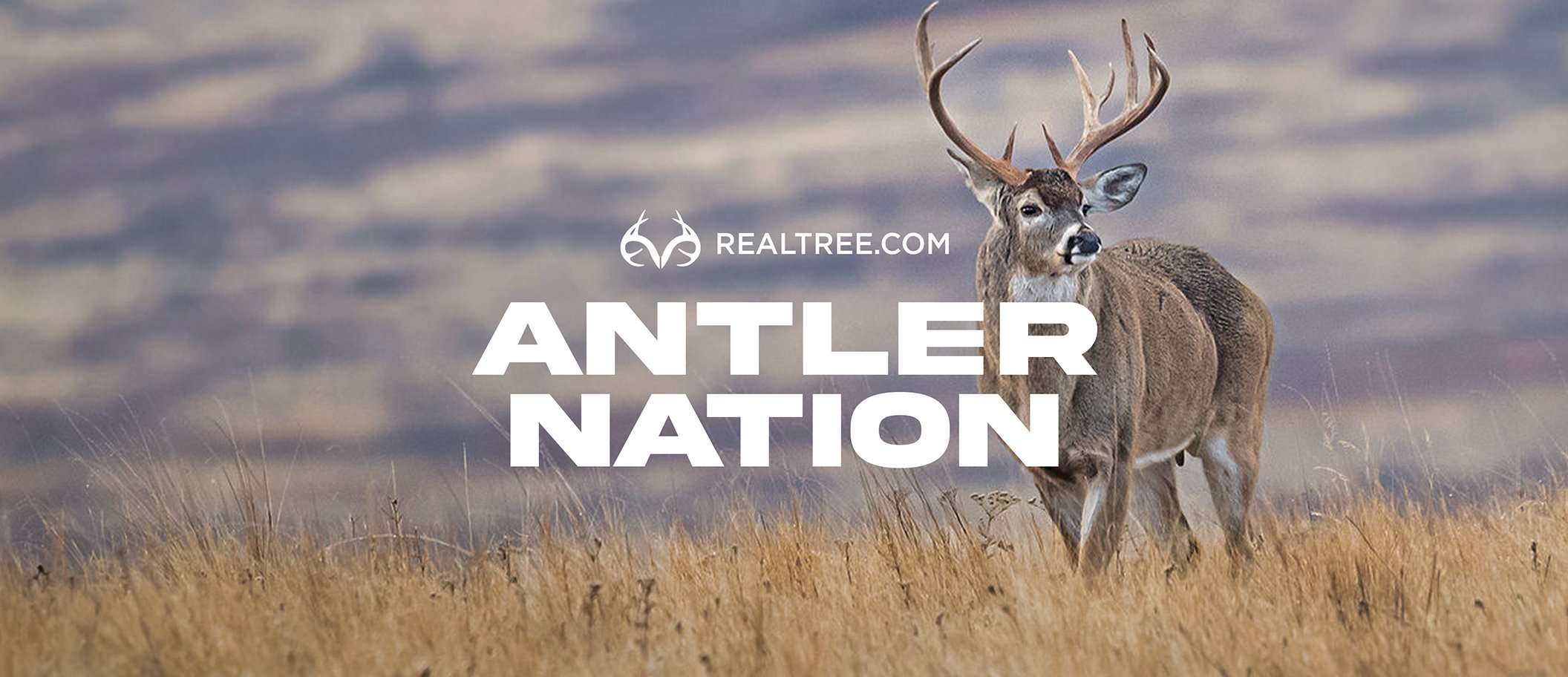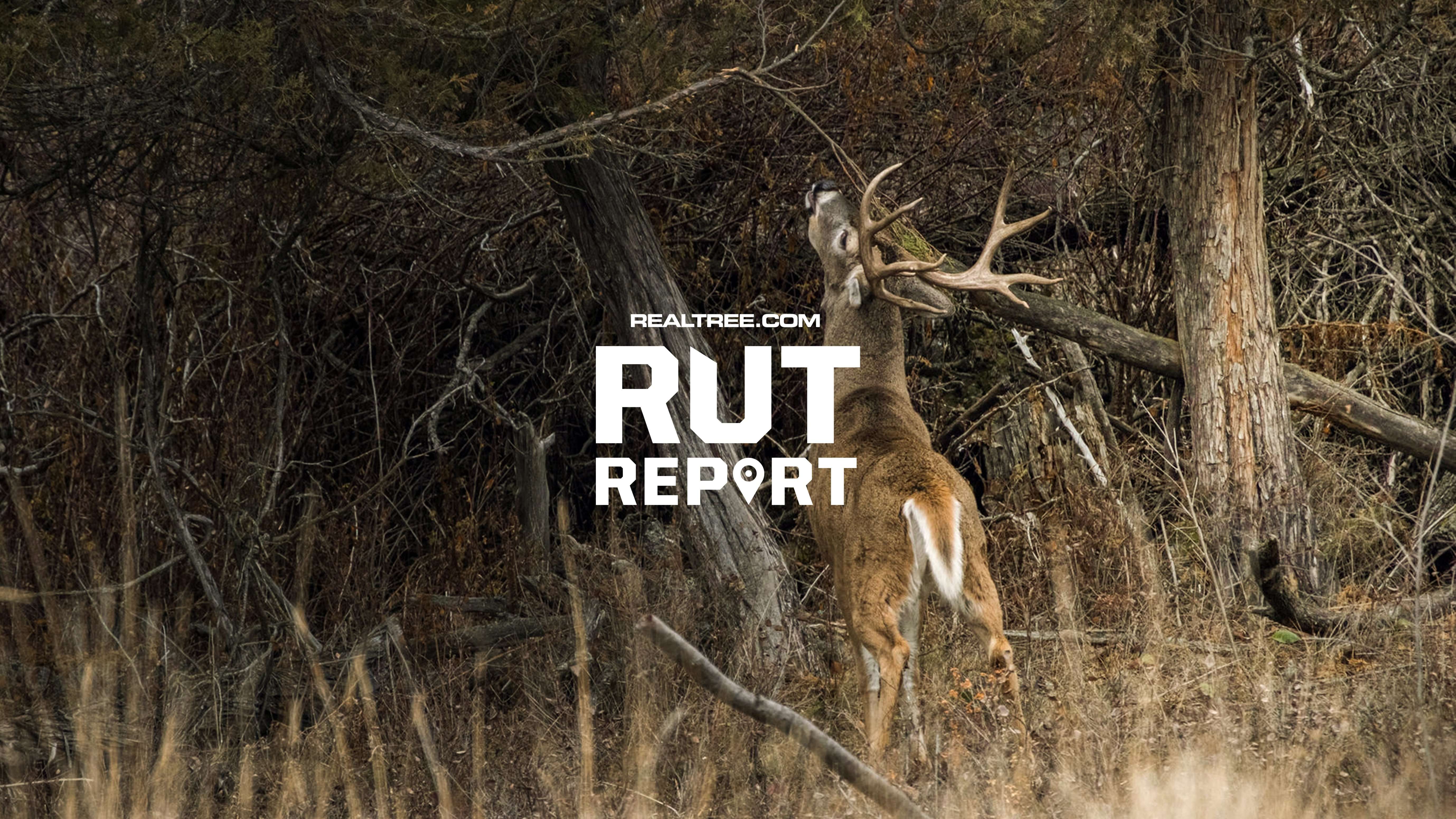There’s a little bit of time left in most states, and if you’re still hoping to tag a buck or even a doe, here are some tips to boost your odds odds
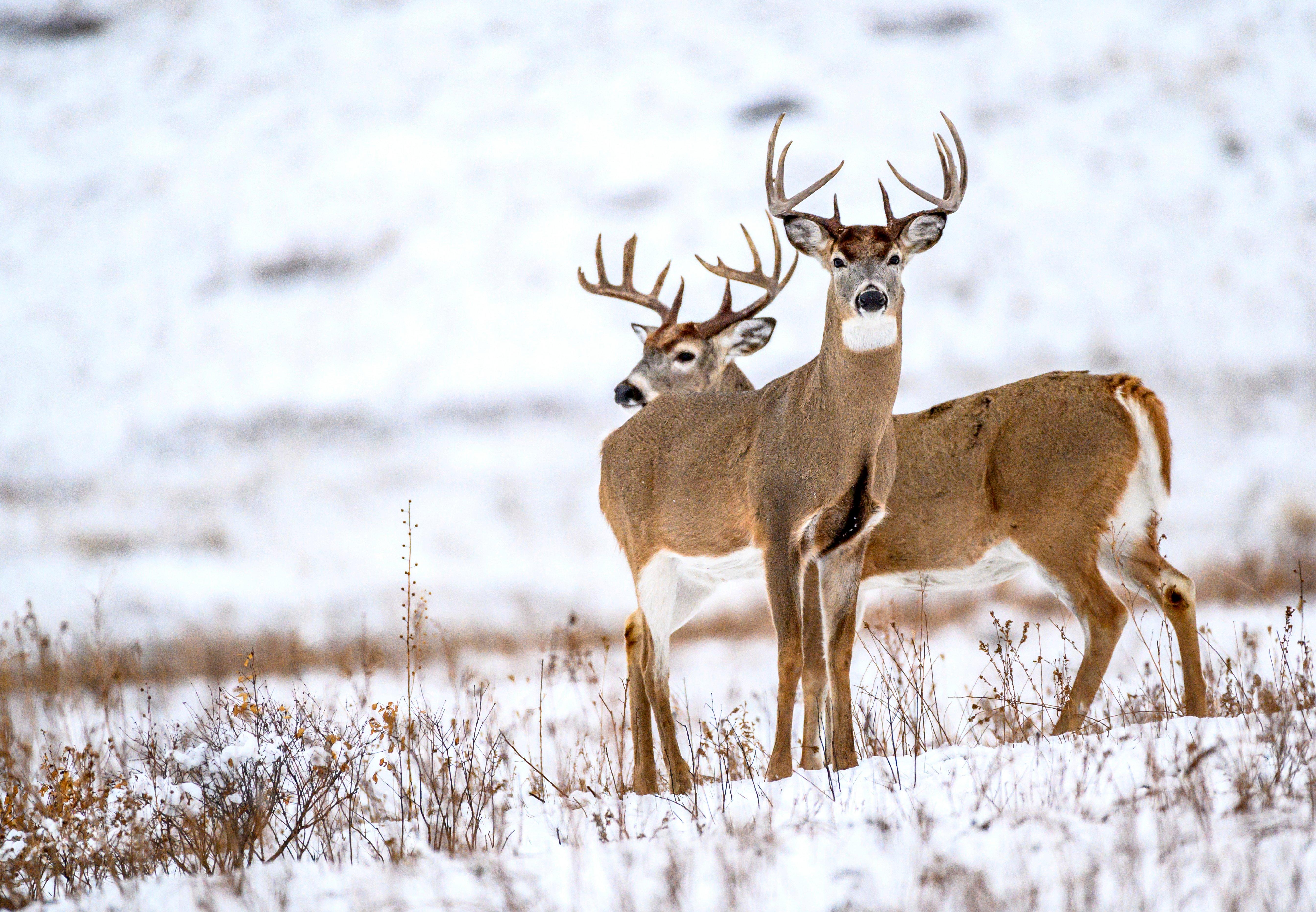
Although some believe the rut is the most productive window to hunt, the late season sees fewer hunters afield, and bucks adopt winter feeding patterns and become fairly predictable. It’s an overlooked time to hunt, especially if you still have a deer tag or two. Photo by John Hafner.
Just like that, the rut is behind us, and the closure of deer season looms across most of the United States. Some of us have filled our tags, and others still have one or two left. If that’s you, it doesn’t matter if you’re after a doe or mature buck. If the season hasn’t closed, success could entail little more than embracing a never-quit mindset.
Late-season deer hunting often gets a bad rap because the deer have been pressured and are moving more nocturnally. The flip side is that there are far fewer hunters afield than there were a month ago, and deer have calmed down to some extent and settled into their winter feeding patterns. And they must eat to survive. Given the right food source, you stand a chance at filling your tag, and getting a chance at a quality buck isn’t out of the question, either.
If you’re still grinding it out, here are some fundamentals that can keep you going and put you in the running for late-season success.
1. GEAR UP AND ENDURE THE COLD
Across most of the whitetail’s range, average daily temperatures tend to drop as the calendar flips from November to December and from December to January. There’s nothing pretty about hunting with a bow or even a muzzleloader in single-digit or sub-zero conditions, but deer must feed, and those brutal temperatures can be your ace in the hole as mature bucks get on their feet and pound the calories.
Gear selection makes a significant difference in your ability to withstand the punishing cold weather. I start with a warm base layer, add a heated vest up top and a mid-layer on my legs, and put on a winter parka and bibs. I wear thin gloves that allow me to operate my bow or firearm, but I keep Hot Hands or equivalent heat packs in my front parka pocket to keep my hands toasty. In extremely cold conditions, I tuck more body-warmer heat packs between my base and mid-layers on my lower back and quads. I also put toe warmers on my insoles and hand-sized body warmers on top of my toes. This was the only way I survived a few hours in my ground blind when I killed a North Dakota buck in minus 20 temps (windchill not included) with 25- to 30-mph winds.
Check Out Our Latest Camo Pattern: Realtree APX
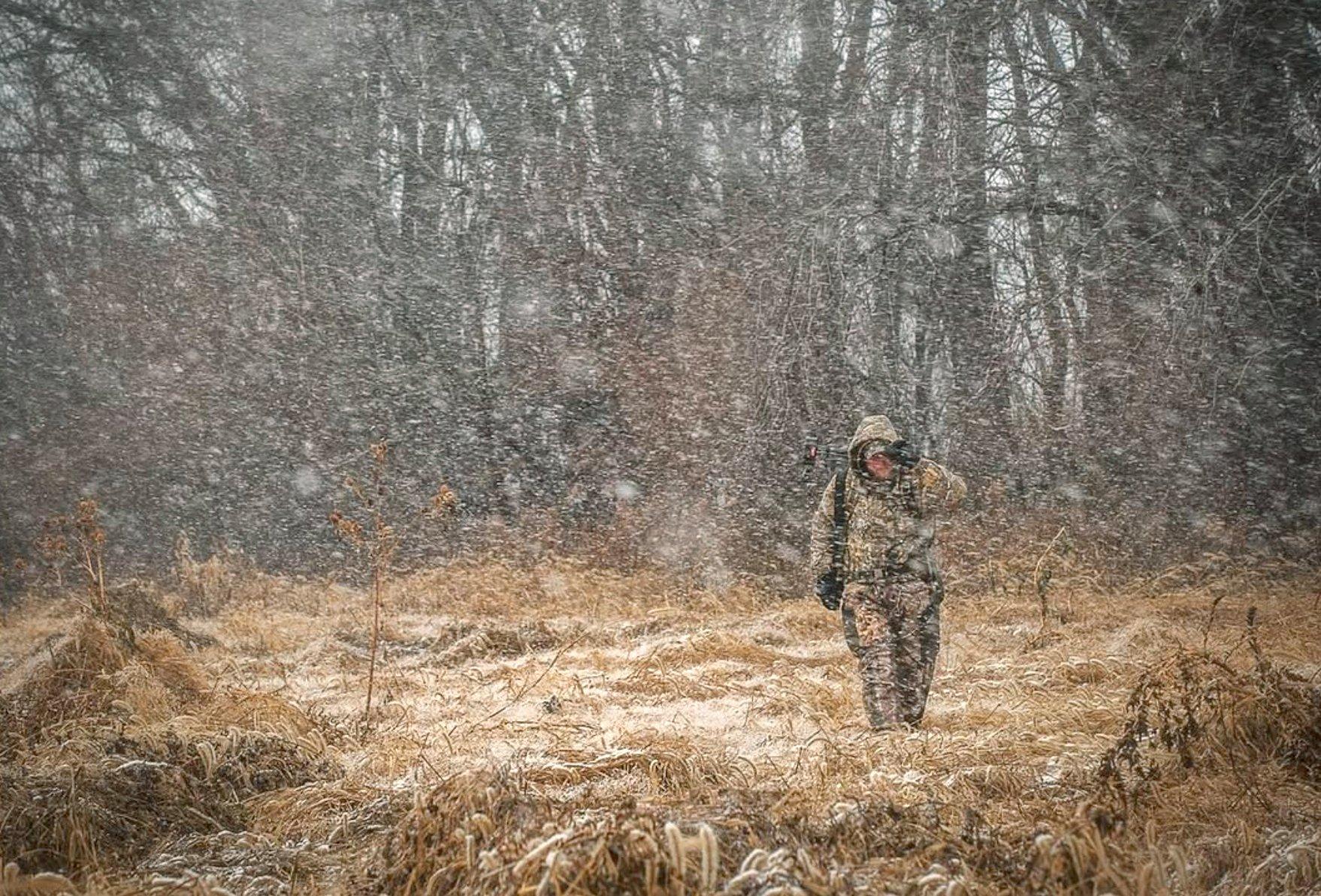
There is nothing glamorous about hunting in biting-cold temperatures, but dressing appropriately can ensure a slightly more pleasant time afield. Photo courtesy of Bill Konway.
I can’t stress it enough: Haul some of your layers on your back and finish dressing when you reach your stand or blind. Or start walking early enough so you can take your time and avoid sweating. Perspiring en route to your stand is a fast track to freezing your butt off fast. Avoid it at all costs.
2. FIND A HOT FOOD SOURCE
It’s no secret that late-season deer hunting is all about food. To survive, bucks must feed in force or they will flirt with death. Productive food sources depend on your geographical location, so let’s discuss some ideas.
In agricultural areas, corn and soybeans are deer magnets. If left standing, they will offer more food, but even picked corn and bean fields generally offer plenty of leftovers to keep deer hooked. As for food plots, brassicas are usually the choice for late-season. Out West and down South, green hayfields and winter wheat are prime food sources that will attract deer. And if you’re hunting in timber country, likely bets are white cedar swamps (deer eat the boughs) and clear-cuts that offer browse.
Don’t Miss: 2-Acre Virginia Property Produces 190-Inch Buck
Without doing too much tromping around, briefly scout potential food sources and look for fresh feeding activities. The presence of snow obviously helps, but in areas where it hasn’t frozen yet, you might be able to study and identify fresh tracks in the soft or muddy soil.
3. CREATE YOUR OWN FOOD SOURCE, IF LEGAL
Where and when it’s legal, baiting is something any hunter can easily do to attract deer. Folks bait with various items, but corn and maybe some protein pellets are the usuals. Automatic feeders, where legal, can help you reduce intrusion, and they regulate the amount and frequency of feed distributed. Wherever baiting is legal but feeders are not, hunters manually bait by carrying out corn and dumping or scattering it onto the ground. Pretty simple, right? Well, not exactly.
To do it correctly, choose a location that will allow you to hunt prevailing wind directions for that time of the year (likely north, west, or northwest). Consider where deer will approach from and where you can place a blind or stand. If the location doesn’t allow you to harness the prevailing winds, look elsewhere. Also, deer generally approach bait sites with extreme caution. Remember, they have been hunted and pressured for months. That means you must have a setup with sufficient cover, allowing you to shift into shooting position and draw your bow or raise your muzzleloader undetected.
4. CHOOSE THE BEST AFTERNOONS TO HUNT
Although cooler temperatures are typical for the late season, big weather events such as snowstorms or below-average temperatures can instigate a flurry of daytime deer movement. Often, a feeding frenzy occurs immediately preceding the weather event. During the worst of the storm, deer sometimes lie pretty low, unless the storm is long-lasting and the snow and cold just keep coming. Then, they must move and feed to survive.
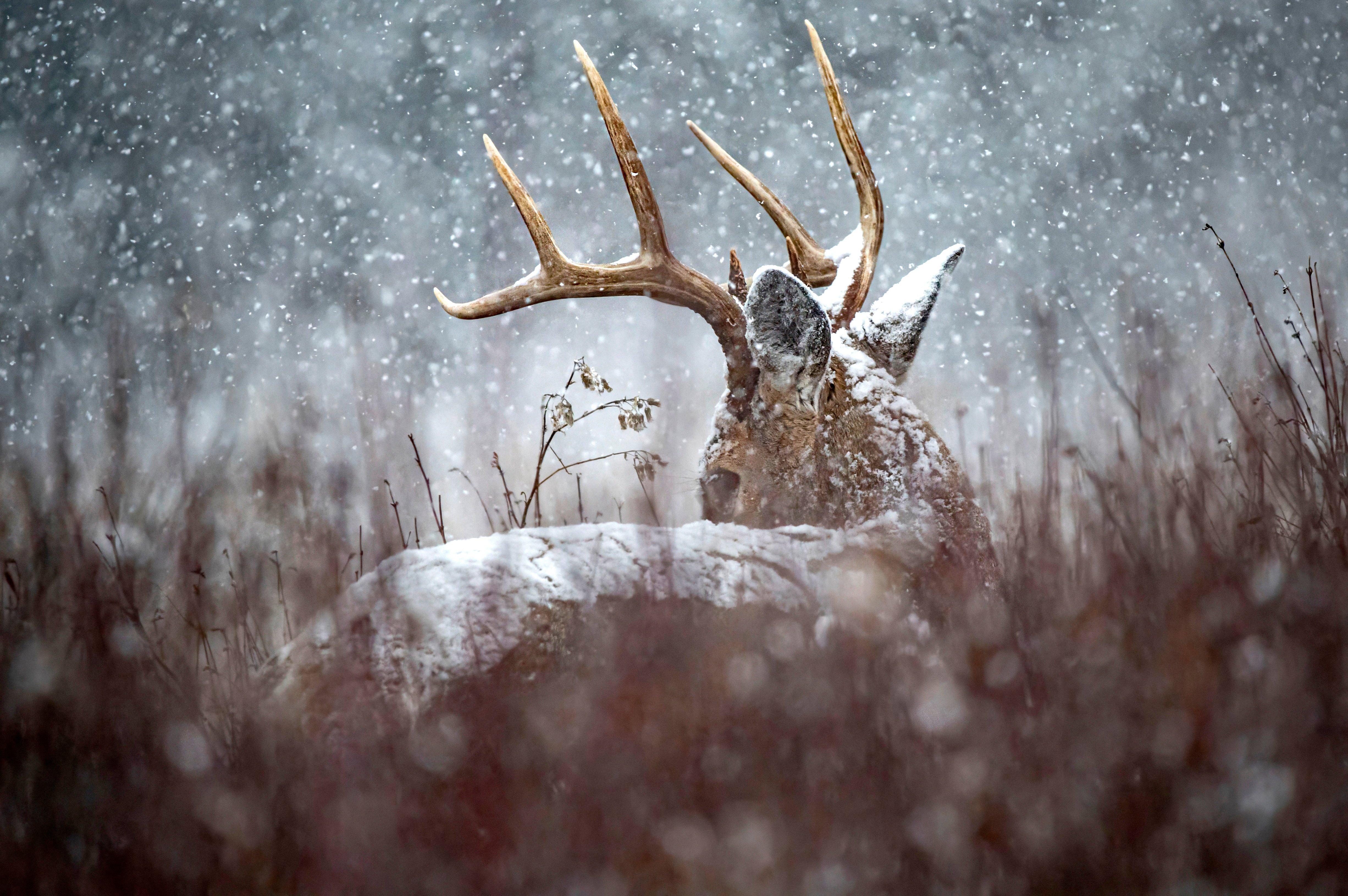
Deer are typically most active preceding and after a weather event, although prolonged snowfall and cold temps will require them to get up and feed during the worst of the storm. Photo by John Hafner.
When conditions stabilize after the storm, expect heavy feeding activity. If you’re picking and choosing when to hunt — and you should — take advantage of the best afternoons. Again, these are typically preceding and immediately after the weather event.
5. HAVE AN EXIT STRATEGY
Exiting a stand located on a food source after an unsuccessful hunt is a dilemma. Deer load up on the food source during the waning minutes of shooting light and thereafter, and you somehow have to exit without disclosing your human presence. Easier said than done. There are things you can do to arrange a property during spring and summer to create hedges between you and the deer along the access route, but if you’re hunting on permission ground or public land, you likely don’t have that luxury.
If you cannot leave your stand or blind without being detected, it’s best if you can arrange to be picked up by someone in a vehicle or on a tractor when darkness falls. If that isn’t possible (think public land), howling like a coyote is a realistic way to send animals off the food source momentarily so you can make a clean getaway. I’ve also snorted like a deer a handful of times. I can’t say I’m a fan of it, but if the other option is walking right by deer and letting them know you’re a human, I’m going to howl like a coyote or snort like a doe.
6. STRIKE WHEN YOUR TRAIL CAMERAS OR OBSERVATION SITS SHOW DAYLIGHT APPEARANCES
It isn't the rut, and sheer time in the woods is no longer a good thing this late in the season. Like a chess match, you must make the right moves. This is especially true if you have only a couple of spots to hunt. Unless you only have a day or two left to hunt, hold off until your trail camera reveals what you’re looking for during daylight, whether it’s a specific buck or some mature does.
Don’t Miss: Video Shows Florida Python Eating Adult Whitetail
Another way to get a bigger picture is to observe a food source from your vehicle, a dwelling, or another vantage point. With great visibility, this is better than trail cameras, as you’ll be able to monitor a much larger area. When you see what you’re looking for, make a plan to swoop in for the kill. Avoid hunting day in and day out when deer are showing up after dark, as you’ll only educate them and make them more nocturnal. Strike when the daylight appearances begin happening.
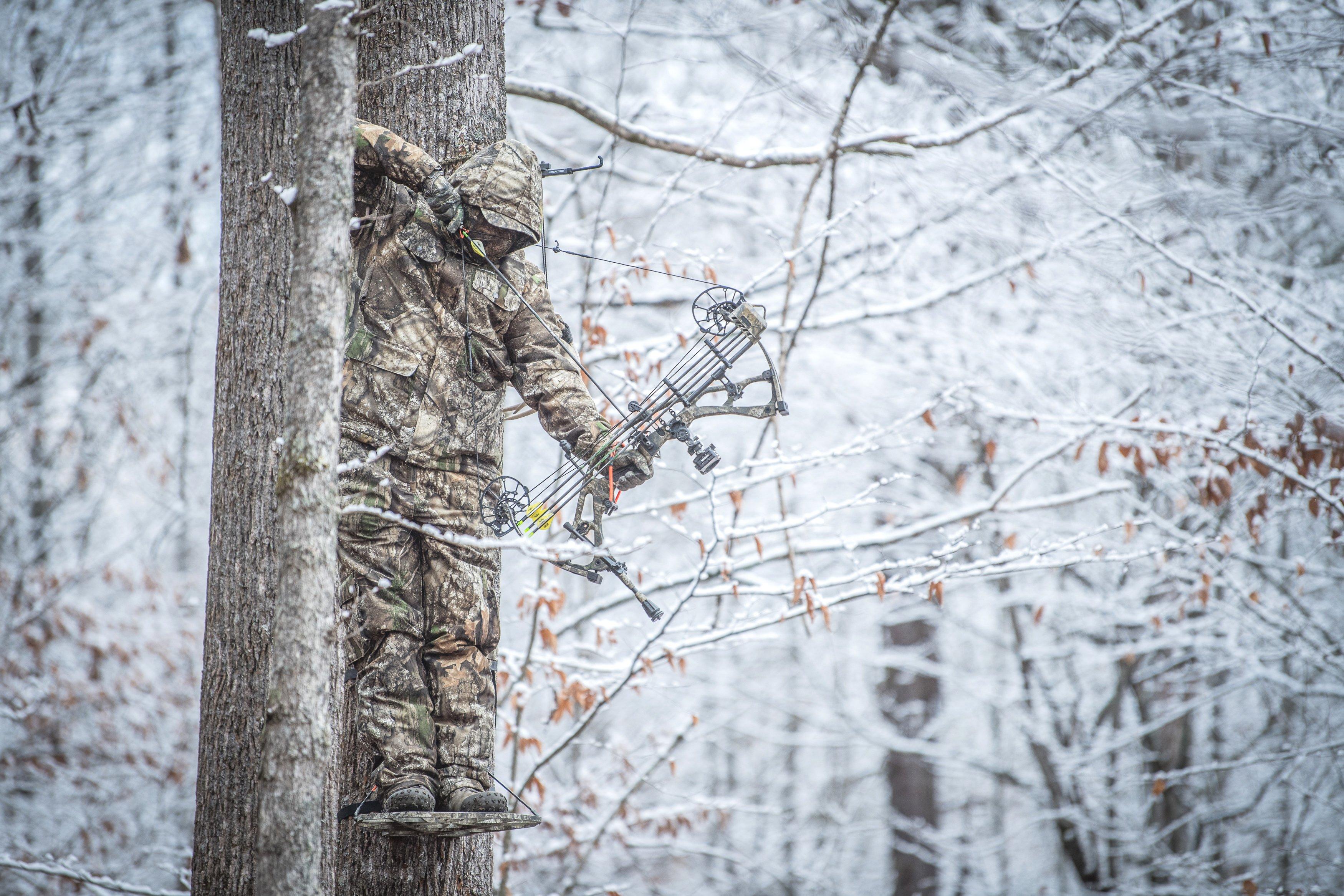
If you’ve had a long, tough season, it can be difficult to continue the grind until the campaign closes, but some of the best bucks of the entire season fall to well-laid late-season strategies. Photo by Bill Konway.
7. STAY THE COURSE
The late season can be a difficult time to hunt. If you’re like me, you’re probably smoked from hunting a lot in November, and with Christmas and New Year’s and all of the family festivities this time of the year entails, going hunting can be a sacrifice. But, if you still have a tag or two and your trail camera or spotting scope has revealed a likely prospect, don’t give up until the season closes.
Many giant bucks become susceptible to well-laid hunting plans during the season’s waning moments. All it takes is one buck to walk by within range to turn your season from a nosedive into a smashing success. So, stay the course and let reality — not your preconceived notions — dictate your success.




